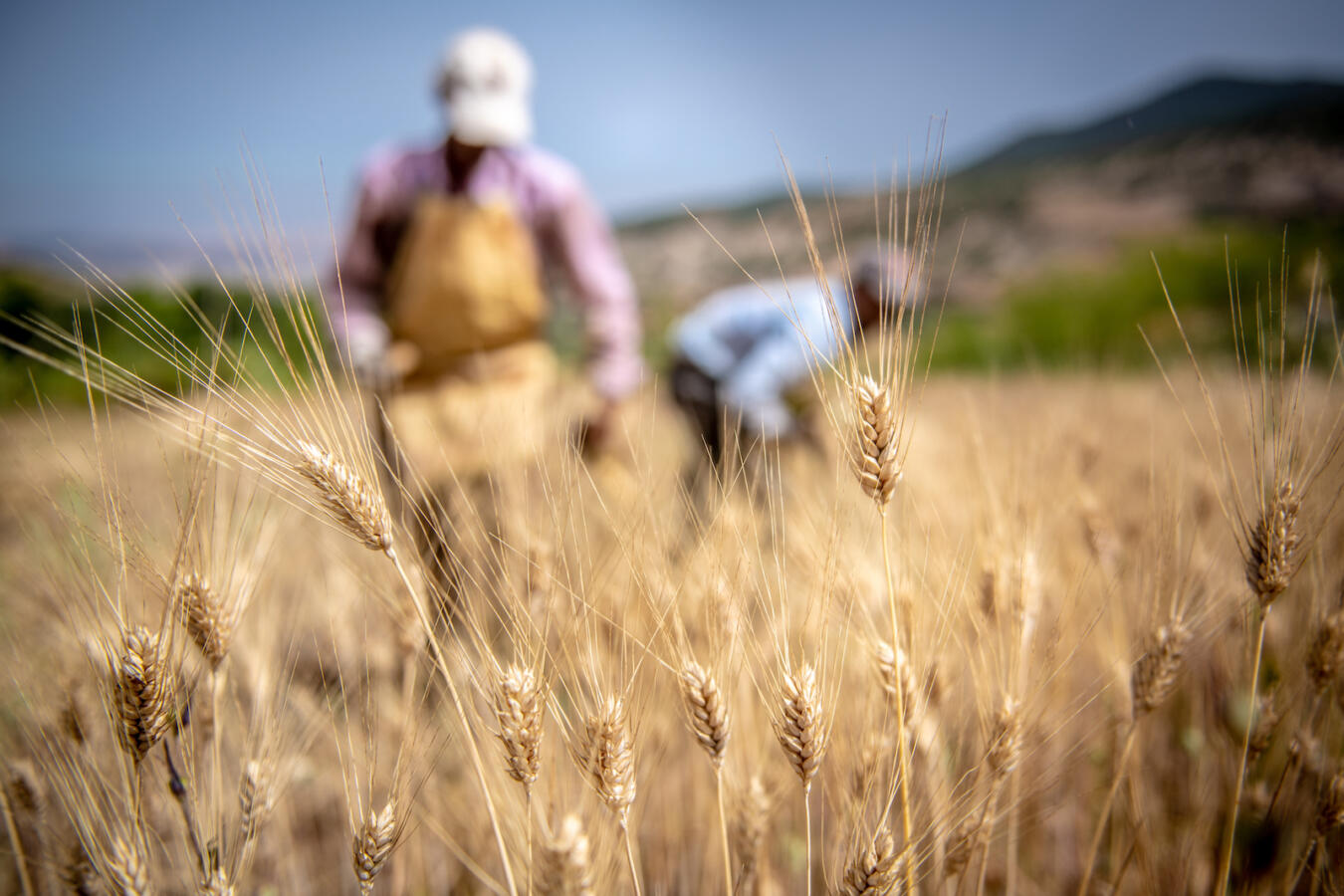It’s fitting this series is called Recharge since a major recharge opportunity is on its way: This Rosh Hashanah we begin the shmita year, the year of sabbatical renewal and release.
People know the word sabbatical (and most likely feel they need one ASAP), but not everybody realizes that the concept comes straight from the heart of Judaism.
The shmita year is enjoined in three of the Torah’s five books; its other names include shabbat ha’aretz (“sabbath of the land”) and shabbat shabbaton (“sabbath of sabbaths”).
What does it mean for the land to keep Shabbat each seventh year? Fields may not be plowed or sown, nor any crop commercially harvested. Whatever food the earth produces unaided can be gathered by anyone, anywhere. Private property is suspended — “For Mine is the land,” God says in Leviticus 25:23 — and becomes shared commons. The year is conceived as one of relative leisure and plenty for the laboring classes and the poor.
With your help, My Jewish Learning can provide endless opportunities for learning, connection and discovery.
By guaranteeing food for all, and removing the profit motive from those with land, shmita serves as a dramatic if temporary social equalizer. Further, if by the end of the sabbatical year any debts are not repaid, they are rendered void.
The rabbis added detail to this biblical vision. Foods that grew on their own were preserved to create communal food stores that were distributed, cost free, to each household during the shmita year. Since all food grown in the shmita year contains extra holiness, the sages taught it should be consumed with extra mindfulness. Thus foodstuffs may not be wasted, traded as commodities, or used as anything but human provender.
So what relevance does this bear for us today?
None at all, some might say. Even if we consider the Torah’s instruction meaningful in general, the shmita laws pertain only within the biblical borders of Israel — and even there, a modern workaround has enabled agricultural work to continue unimpeded. For the rest of the world, these laws are moot.
But to take this approach misses an opportunity to reckon with a profoundly disruptive ancient ideal — one strikingly relevant to our times.
For shmita is nothing if not disruptive. It is designed to slow down production, to redistribute resources (and thereby power), to cultivate generosity, forward planning and collective care, and to help us develop self-control for the long haul. What other mitzvah takes a whole year to complete?
Most fundamentally, shmita is disruptive because, like Shabbat, it gives us the opportunity to imagine alternatives. When we take one phase out of seven and change the rules we live by for that time, it demonstrates that what we consider normal is always a construct, the result of causes and conditions, and that these can be altered to produce different results. Thus we come to understand that profound change is not only possible, but within our reach.
So what changes might we need in this shmita year?
Let’s start with stopping. Like Shabbat, shmita is a necessary reset, an inflection point for observation and course correction.
On a personal level ask yourself: What is my commitment to time off this coming year? Do I believe I have a right to rest? Is leisure a universal human right? You might consider a periodic digital detox, upleveling your Shabbat, going on retreat, or some guided shmita practice. Interrogate your relationship to your work and creative life. Is there something calling to be put on pause?
Societally, shmita asks us to think in terms of seven year cycles. Where have we come since 2014? And where will we be in 2028?
For me, one unavoidable association of this seven year count is the Climate Clock installation — launched, in fact, last Rosh Hashanah — which is ticking down the 6.5 or so remaining years before our fossil fuel and factory farm habits locks in global temperatures 1.5 degrees centigrade above pre-industrial levels — and with that a chain of consequences that scientists say will make our current heat surges, wildfires and floods seem trivial. Global food systems are precarious; with this trajectory we can expect to see famines, wars over resources, and hundreds of millions of people displaced.
We have the time between this shmita cycle and the next — and that time alone — to course-correct.
Curiously, some of the very best advice about how to course-correct rests directly on shmita principles.
What if we took seriously the instruction to eat only what is grown locally and in season? What if, as shmita necessitates, we stopped depending on annual crops that systematically deplete the soil and instead cultivated perennials, which enrich and equip it to sink carbon? What if we accepted the principle that food grown during this year is sacred and must not be wasted (as over one-third currently is) or traded as a commodity?
Shmita laws also prohibit using human foods like corn as animal feed; all livestock must freely pasture. What if we ended factory farming this year — or at least abstained from supporting it? Scientists estimate that upwards of 50% of greenhouse gas emissions are produced by animal agriculture — more than manufacturing and transportation combined. What we eat matters — not just for our own health, but for the health of the planet.
Shmita is inarguably a utopian ideal, a sort of mythic guarantor of grace. Like Shabbat, it is evocative of a wild original innocence, our realization that we are living in God’s garden. It asks us once again to choose wisely what we consume and warns that our choices have consequences.
Like Shabbat, shmita is a celebration of creation and our availability to enjoy it — a practice of such importance that if not observed social collapse and exile follow. “Then the land will enjoy her Shabbats, during the period of desolation,” Leviticus advises.
One way or another, the earth needs to rest.



